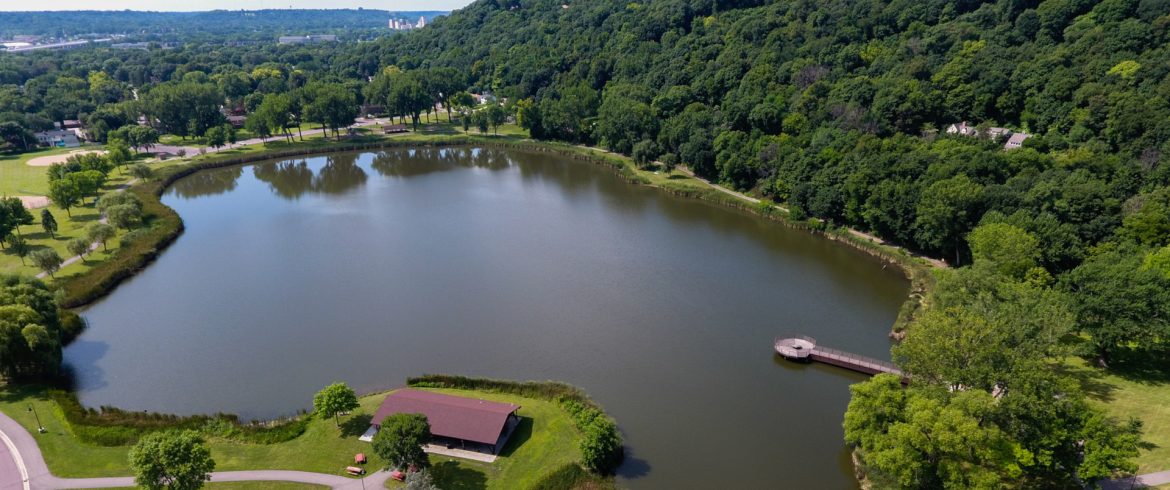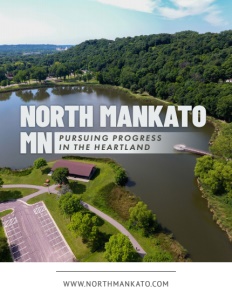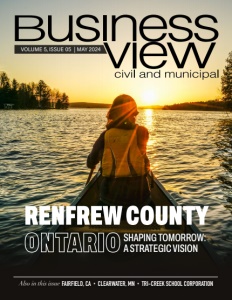City of North Mankato, Minnesota
Pursuing Progress in the Heartland
Shaping a dynamic future through strategic development, innovative partnerships, and community-focused initiatives.
In the heart of Minnesota, North Mankato offers a unique blend of small-town charm and expansive opportunity. This community is known for its vibrant lifestyle that caters to young families, businesses, and outdoor enthusiasts. From the accessible housing market to the wealth of recreational and business opportunities, North Mankato plays a large part in helping grow the Greater Mankato Area into a flourishing hub in the region.
City Administrator Kevin McCann elaborates on life in this bustling community: “North Mankato is a great place with a variety of opportunities for young families, housing, recreational amenities, and business opportunities. We have lots of business opportunities with available space and land.”
McCann continues, detailing the recreational jewels that enhance the quality of life for residents. “We have Spring Lake Park in the lower part of town, which is part of the older section of North Mankato. It features walking trails, a fishing pier, an ice rink, and a sledding hill in the winter. During the summer, residents enjoy a pool, playgrounds, baseball fields, volleyball courts, and picnic shelters.”
Situated along the gentle waters of Spring Lake, this park serves as a central gathering place for community events and everyday leisure. “Spring Lake itself is a small pond with a stream running out of it,” McCann explains. The city also boasts additional parks, such as Benson Park and Bluff Park in Upper North, which offer more naturalistic settings with extensive trails and scenic features.
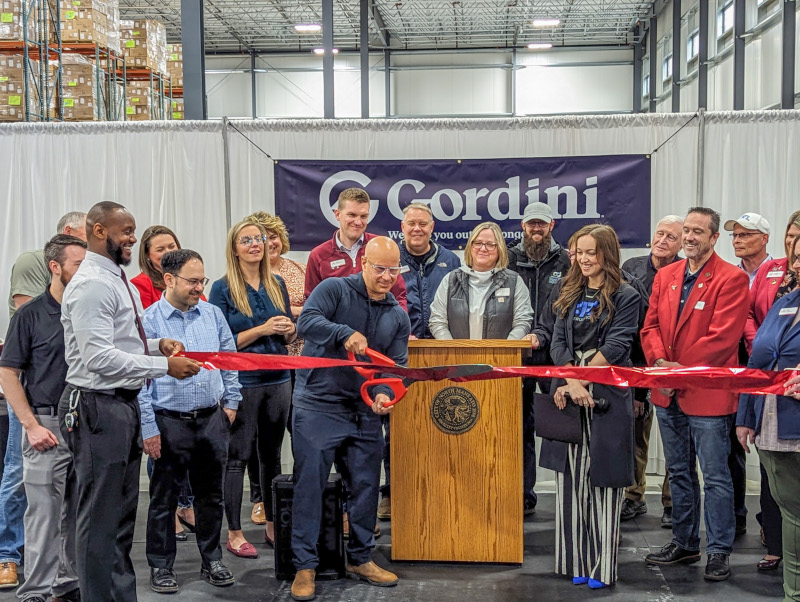
Gordini Ribbon Cutting
Revitalizing Downtown North Mankato
In North Mankato, the push to revitalize the downtown area is more than just a vision; it’s a carefully orchestrated plan to transform the central business district into a vibrant hub for both locals and visitors. Community Development Director Mike Fischer outlines the strategic direction being pursued.
Fischer notes that, while the major economic development driver for the city is the Northport Industrial Park, the downtown also fits into the broader economic development strategy for the city with emphasis on a structured planning process for improving and expanding the downtown area as a destination. “We start our planning processes with both small and long-range plans. Specifically, we’ve implemented two key plans in the downtown area: the Belgrade Avenue Redevelopment Plan and the Belgrade Avenue Corridor Plan, which addresses transportation issues.”
City Planner Matt Lassonde further details these development efforts, noting their scope and community focus. “We’ve conducted several small area plans to guide development in the community. The downtown, which spans about three and a half blocks, has been the focus of a corridor study and a downtown master plan created in 2016,” he explains. These plans aim at infill development and optimizing underutilized sites to densify and enrich the downtown experience.
Lassonde shares insights into the community’s desires, which vary by district but show a clear preference for specific amenities. “Coffee shops consistently top the desired additions in the downtown area. A grocery store is often requested for Upper North and some business districts.” This feedback directly influences the development initiatives, aiming to fill gaps and convert existing spaces to meet these needs.
Further enhancing the downtown’s appeal, Lassonde mentions the active involvement of local businesses through a business association known as Business on Belgrade. “They partner with the city to host events like Bier on Belgrade, Blues on Belgrade, Bells on Belgrade, and other social gatherings , which transform the downtown area into a pedestrian-friendly, festive space,” he states, highlighting the dual goals of these events, fostering community spirit and enhancing the area’s economic vitality.
Expanding Residential Options in North Mankato
As North Mankato strides forward, balancing growth and community needs, residential development remains a hot topic. The city is experiencing a shift in housing trends, moving from predominantly single-family homes towards more multifamily dwellings and townhomes. Lassonde provides insights into the current projects shaping the future of housing in North Mankato.
“We do have a few multifamily developments in the works that we’re trying to see to completion,” he says, pointing to a significant project involving the adaptive reuse of the former Norwood Inn. “This development is converting the structure from a hotel into 70 apartment units, which are expected to accommodate workforce housing needs.”
Fischer highlights the broader housing landscape, acknowledging a shift in the types of housing being built. “Historically, we’ve seen a balance of single-family homes, apartments, and townhomes. Lately, there’s been a noticeable decrease in single-family homes but an increase in townhomes and apartments,” Fischer explains. Despite a slowdown in housing development over the last five years, he maintains that the sector remains robust and is expected to grow.
Fischer emphasizes the challenges and the city’s strategic responses to housing affordability, a pressing issue. “The main issue is affordability. Finding and building affordable homes for families is challenging, and we’re working closely with developers to create more affordable and workforce housing options,” he notes. This effort aims to ensure that essential workers, such as firefighters, police officers, paramedics, nurses, and teachers, can afford to live close to their workplaces, enriching the community’s fabric.
Regarding industrial development, Fischer discusses the strategic approach to commercial growth in North Mankato. “The economic engine of North Mankato is our North Port Industrial Park,” he states. The success of previous industrial parks has led to the Port Authority’s proactive strategy of purchasing land, developing it into shovel-ready sites, and then selling it to developers. “This model has proven successful over the years and is evidenced by the thriving businesses and job creation in our industrial parks,” he adds.
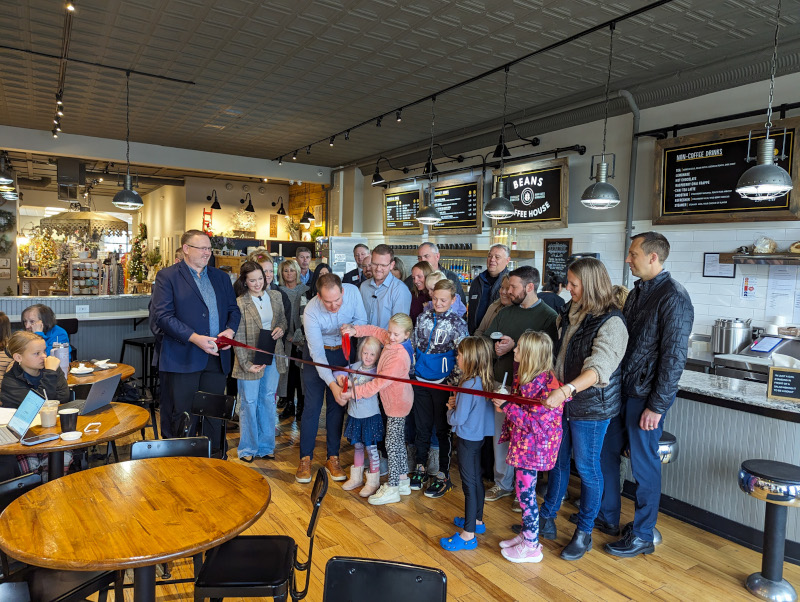
Beans Coffee House Greater Mankato Growth Ribbon Cutting
Facilitating Growth in North Mankato
North Mankato’s strategic approach to attracting businesses and facilitating residential growth is multifaceted, focusing on providing robust infrastructure and attractive incentives. This dual approach enhances the city’s appeal as a prime location for investment and ensures that it is equipped to support future growth sustainably and efficiently.
Fischer emphasizes the various incentives that North Mankato offers prospective businesses and developers. “Primarily, the Port Authority has utilized tax increment financing (TIF) as its main development tool,” he explains. This method of public financing subsidizes community improvement projects, effectively attracting and supporting qualified businesses and industries that meet specific criteria.
Diving deeper into the infrastructure that supports these incentives, Fischer elaborates on the city’s readiness for growth. “In terms of infrastructure, we’re well positioned for current and future growth,” he states. North Mankato’s strategic planning has laid a detailed, long-term groundwork for its infrastructure systems. “We’ve planned out the future of our infrastructure system extensively. We know what it is today and what it will be in ten years. This includes the capacities we can handle and where major and minor roads will be built,” he adds, emphasizing the foresight that guides the city’s development initiatives.
Regarding highway infrastructure, Fischer highlights recent upgrades that enhance the region’s connectivity. “Adjacent to North Mankato is Highway 14, a major four-lane highway in Minnesota. Recently, a portion of Highway 14 transitioned from a two-lane to a four-lane highway between North Mankato and the city of New Ulm,” he notes. This expansion improves local transportation and positively impacts the broader region, boosting accessibility and potentially stimulating economic activity.
Fischer assures North Mankato is well prepared to address the increasing demand for high-speed internet, which many now consider an essential utility. “We have several local utility companies that are well equipped with fiber. When new housing, commercial, or industrial developments come to our community, they can be confident that they will have access to multiple choices of fiber and a reliable source,” he confirms. This applies equally to residential and commercial developments, ensuring that all city sectors are well-supported with critical digital infrastructure.
Strategic Partnerships Fueling North Mankato’s Growth
As North Mankato continues to expand and evolve, the role of strategic partnerships becomes increasingly vital. These collaborations amplify the city’s capabilities in managing growth and enhance its economic and social landscape.
McCann emphasizes the importance of regional collaborations, particularly with neighboring communities. “REDA, the Regional Economic Development Alliance, is instrumental,” he states, highlighting the alliance’s role in advancing regional economic strategies. This collaboration extends to the city of Mankato, located just across the river, which is crucial to North Mankato’s operational dynamics.
Further elaborating on the joint efforts, McCann points to the Mankato/North Mankato Area Planning Organization (MAPO). “MAPO is a key part of our joint planning efforts,” he adds, signifying the organization’s role in synchronizing regional transportation initiatives that affect both communities.
Beyond government-led initiatives, McCann discusses the role of local business organizations in driving economic development. “There’s a big umbrella group called Greater Mankato Growth (GMG), which functions as a chamber, lobbyist, and oversees the REDA functionality,” he explains. GMG plays a multifaceted role for North Mankato through lobbying and economic development promotion and enhancing the city’s aesthetics and revitalization efforts through initiatives like the City Center Partnership (CCP).
Furthermore, McCann touches on initiatives aimed at workforce development, though indirect, that connect education to local employment opportunities. “While not directly involved, we participate in a committee that focuses on workforce development issues,” he clarifies. This committee, known as the Cities, Colleges, and Universities Committee, includes representatives from North Mankato, Mankato, the nearby city of Saint Peter, and various educational institutions, highlighting a collaborative approach to fostering local talent and employment opportunities.
Setting Priorities for North Mankato’s Future
As North Mankato moves through the current year and looks toward 2025, the city’s leadership focuses on strategic goals that balance growth with sustainability. McCann articulates these priorities with clarity.
“We want the city to grow and thrive and attract more residents with a variety of housing stock while maintaining a well-balanced budget and excellent city services,” he states, summarizing the multifaceted goals the city aims to achieve. This broad vision encompasses both the desire for expansion and the necessity of maintaining high living standards for all residents.
Further emphasizing the importance of housing, McCann acknowledges that addressing the housing gap is a top priority. “Housing is a priority, and we’re actively setting things up regarding zoning and identifying future land for growth,” he explains. However, he also notes the challenges posed by broader economic factors. “It’s still really impacted by global economic conditions, and with interest rates as high as they are, it’s challenging to incentivize building.”
McCann also highlights the role of local government in mitigating these challenges. “We can implement local policies that help address these issues,” he asserts, highlighting the proactive steps North Mankato is taking to support housing development despite external economic pressures.
As North Mankato prepares for the coming fiscal year, the leadership’s commitment to growth, balanced budgets, and excellent city services remains firm. These priorities reflect the city’s immediate plans and its dedication to ensuring a prosperous future for all its residents.
AT A GLANCE
City of North Mankato
What: A vibrant city known for its strategic economic development and community-focused initiatives
Where: Minnesota, USA
Website: https://www.northmankato.com/
